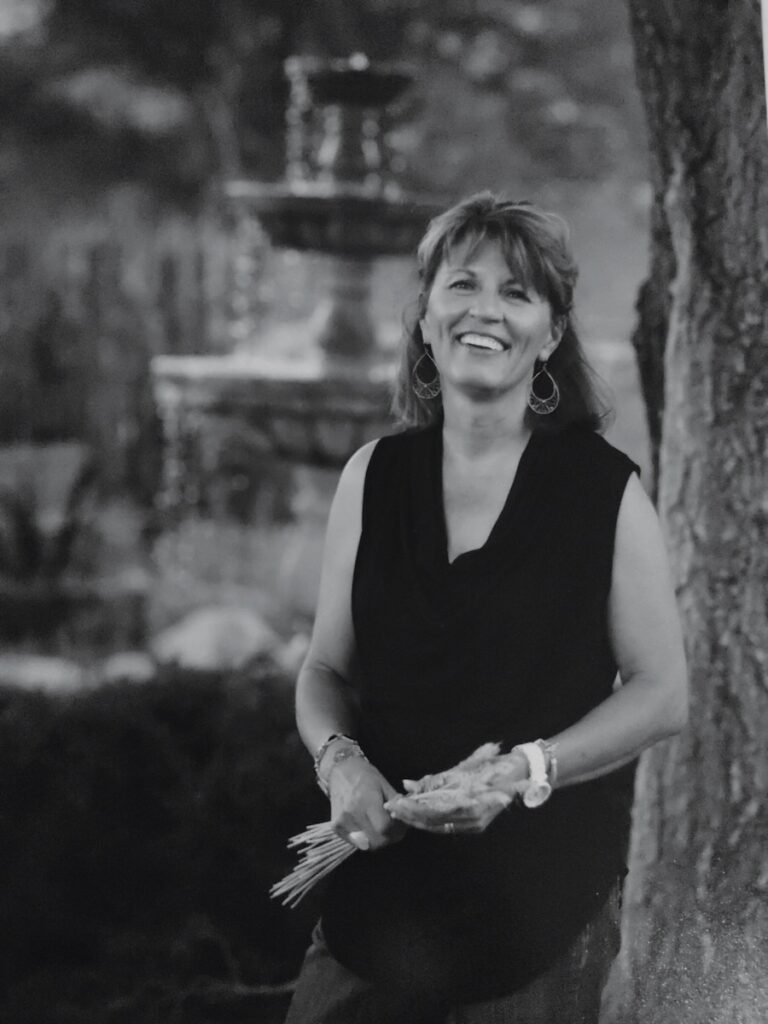Artist Jean Anaya Moya has exhibited at Traditional Spanish Market for over 25 years and recently at the International Folk Art Market. She creates bultos, retablos, and most notably, the delicate art of straw appliqué. But it’s when she combines the art forms that something truly magical happens.
Jean Anaya Moya’s Traditional Spanish Art Techniques
Jean Anaya Moya selects a piece of straw—softly tinted the color of roses—and places it on her workbench. She chooses an exacto knife from her toolbox and cleanly slices the straw down the middle, then presses it flat. Effortlessly, she shaves off the inner pith and sets the knife back down. The whole process has taken mere seconds. Yet really, it has taken years—decades, even—for her to hone the skills and artistry of straw appliqué.
It’s hard to think of a time when art hasn’t been part of her life. Her mother enrolled her in a craft club when she was young. Each month she eagerly waited for the package to arrive, containing some new project to absorb her. In high school, she took every art class on offer until there were no more to take. The school, in a clever move, allowed her to do an open study for her senior year.
Discovering Retablos and Straw
But it was when she started doing retablos that Moya found an art form she would fall in love with and love to this day. She remembers when she decided she wanted to take part in Traditional Spanish Market. “And Bud Redding, who was the director at the time, said, there’s so many retablo artists, but we only have five straw artists. So, if you really want to do market, you should look at straw,” she remembers.
Moya did look at straw, taking a class at the International Folk Art Market, taught by artist Charlie Sanchez. She points to a small cross on the wall that she created during that first two-hour class. “And so, from there, I just said, this is it. This is what I’ve been looking for. This is what I love.”
The Allure of Straw Appliqué
But what is it about straw appliqué––an art form that started in New Mexico when the Franciscans needed artwork to decorate their mission churches––that she loves? “I think part of it is that it ties my culture and my religion and my love of art,” she says.

Her art continued to evolve, and she found herself looking for ways to combine straw and wood. “And so I told myself, well, I like doing retablos, but I’m going to do them in straw instead, but I’m going to carve the tops or the sides of the flat relief.”
Adding Color and Depth
When she started using colored straw, her work took on even greater vibrancy. “Instead of painting with paint, I’m creating and painting with colored straw,” she says. You can see glimpses of Renaissance frescoes in her work or the influence of Moorish mosaics. With these influences, she creates a feeling of three-dimensionality that brings her pieces to life. “It’s not just linear lines,” she says, “but with the colored straw, we really create perspective and depth and light, shadows, and different forms and shapes.”
Passing on Spanish Tradition
Now her two youngest sons are following in her footsteps (her eldest is Santa Fe’s fire chief). “Matthew enjoyed more of the retablos and carving, and Craig geared more towards the straw,” she says. There is a feeling that in the work of artists like Moya and her sons, straw appliqué, retablos, and bultos––traditional Spanish arts––are in safe hands.
Story by Julia Platt Leonard
Subscribe to TABLE Magazine‘s print edition.
